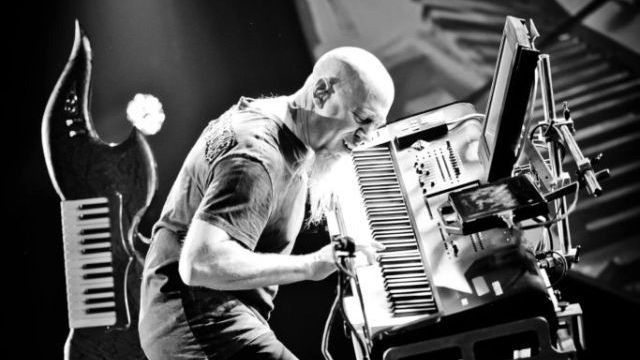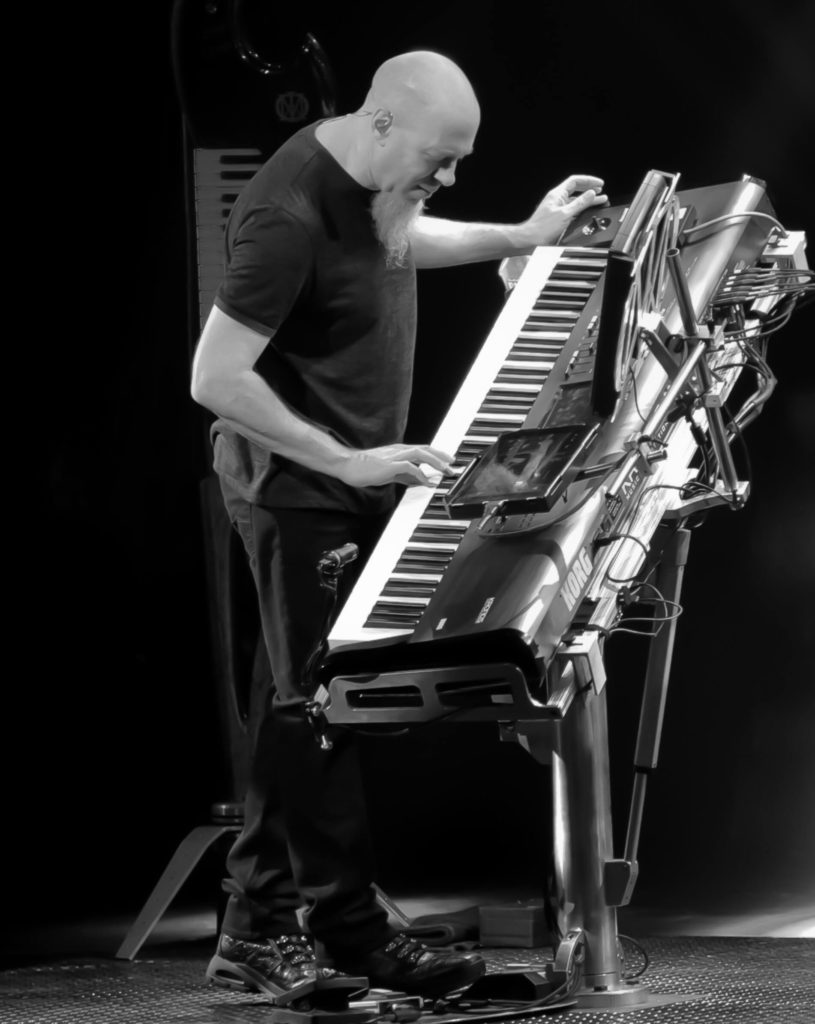Jordan Rudess on GeoShred, Expressive MIDI, and the Future of Music Tech

Progressive rock icon Jordan Rudess – known to many as the keyboardist of Dream Theater – has also made a name for himself as a cutting-edge music technologist.
In a recent installment of “GeoShred Studio Sessions,” Rudess sat down to discuss the creation of the GeoShred app and share insights on new MIDI-driven music technologies. The interview offers a fascinating look at how a legendary musician is bridging traditional virtuosity with modern digital innovation.
Key Highlights from the Interview
- GeoShred’s Origins: Rudess introduces himself as “one of the creators of GeoShred” and recounts how his passion for expressive instruments led to developing the app.
- Innovative Tech: He emphasizes GeoShred’s use of physical modeling synthesis and advanced MIDI capabilities (like MPE) to achieve realistic, guitar-like expressiveness on a touchscreen.
- Musical Applications: Rudess demonstrates how GeoShred allows fluid pitch bends, vibrato, and articulation normally impossible on a standard keyboard, and notes that he even uses it in professional music settings.
- Industry Impact: The conversation touches on GeoShred’s growing influence – from topping app charts to being featured in high-profile demos – reflecting a broader trend of musicians embracing mobile music tech.
A Legendary Musician Turned Technologist

Jordan Rudess has long straddled the worlds of virtuosic performance and music technology. As he notes in the interview, he’s not only Dream Theater’s keyboardist but also co-founder of the award-winning GeoShred app. This dual identity as a “musician and a technologist” has driven Rudess to seek new ways of expressing music beyond the conventional keyboard. In the video, he recalls his motivation for creating GeoShred – born from a desire to achieve guitar-like expression on a digital surface. Rudess’s background (from Juilliard-trained pianist to prog-rock innovator) uniquely positioned him to envision an instrument that could bend notes, slide between pitches, and add vibrato much like a guitar or violin, yet be played on a tablet.
GeoShred: Bringing Guitar Expression to a Touchscreen
During the interview, Rudess describes how GeoShred came to life as a collaboration between his company Wizdom Music and partners at moForte/Stanford. The goal was to create a mobile instrument app that offers the same expressiveness as traditional stringed instruments. GeoShred’s interface looks like a fretboard-meets-keyboard, where notes can be continuously bent and modulated. Rudess demonstrates in the video how he can perform wild guitar solos and fluid lead lines on an iPad – complete with intricate pitch slides and vibratos – all by dragging and pressing on the glass surface.
Thanks to an innovative pitch-rounding algorithm, GeoShred lets the player slide between notes freely while intelligently snapping in tune when landing on a scale note. This means you can have the soulful portamento of a fretless instrument without chaos: a feature Rudess highlights as key to making the app musically useful and not just a novelty.
Under the hood, GeoShred uses physical modeling synthesis rather than samples for its core sound engine. Rudess explains that this technology physically emulates how instruments behave, allowing for a far more organic response to performance gestures. When he wiggles his finger for vibrato or swipes for a pitch bend, the sound responds just as an acoustic instrument would, because it’s being generated by real-time mathematical models.
Jordan, and fellow MoForte partners Pat Scandalis (Chair of the MIDI Association MPE Profile WG) Dr. Julius 0. Smith III , and Nick Porcaro gave a wonderful presentation on Physical Modeling at AES 2020.
Embracing MIDI’s Latest Innovations (MPE and Beyond)
An important part of GeoShred’s magic, Rudess points out, is its use of advanced MIDI capabilities. In particular, GeoShred is built with MPE (MIDI Polyphonic Expression) in mind. MPE is a modern MIDI extension that allows each note to carry independent expressive control. Rudess enthusiastically demonstrates how this works: for instance, he can play a chord and slide one note of the chord upward into a new pitch while the others remain in place.
Because GeoShred sends each note on its own MIDI channel, it captures these nuanced gestures per note. GeoShred can also act as a controller to play other MPE-compatible synths with the same level of expression. Rudess mentions that GeoShred’s developers are actively involved in the MIDI Association’s efforts to refine the MPE specification.
Beyond MPE, GeoShred supports standard MIDI input, so a keyboard controller or even a breath controller can drive its sounds. Rudess notes that musicians connect MPE controllers like the ROLI Seaboard or LinnStrument to GeoShred, combining those hardware surfaces with GeoShred’s sound engine for a powerful result. The app now exists both as an iOS app and as a macOS plugin, making it even more versatile for desktop setups.
The same group of people as listed above for Physical Modeling did a presentation on MPE for a CCRMA open house in 2024.
Real-World Use and Industry Reception
Rudess shares anecdotes of using the app in his own music projects – both in the studio and on stage. For example, he performs guitar solos in Dream Theater concerts using GeoShred on an iPad. Listeners are often stunned when they realize the “guitar” sound is coming from a touchscreen.
GeoShred recently hit the #1 spot on the iPad App Store’s paid music apps chart, and a feature on Rick Beato’s YouTube channel helped introduce GeoShred to a much wider audience. Rudess highlights how GeoShred’s instrument library has expanded to include modeled instruments like violins, trumpets, sitars, and more, offering expressive options for musicians across genres and cultures.
Insights on the Future of MIDI and Music Creation
Throughout the conversation, Rudess offers a bigger-picture perspective: we are in a golden age of expressive electronic instruments. He highlights the democratization of these technologies: what once required expensive equipment can now be experienced on a simple tablet.
Rudess expresses excitement about future innovations, including MIDI 2.0 and improvements in tactile control surfaces, all of which will make digital instruments even more responsive and expressive.
His key message to musicians: embrace new technology, and let it inspire new creative possibilities.
Conclusion: Bridging Tradition and Innovation
The GeoShred Studio Sessions interview with Jordan Rudess shows how MIDI technology is helping musicians blend traditional performance skills with digital innovation. With tools like GeoShred, artists can unlock new levels of musical expression, opening thrilling creative possibilities for performers and producers worldwide.